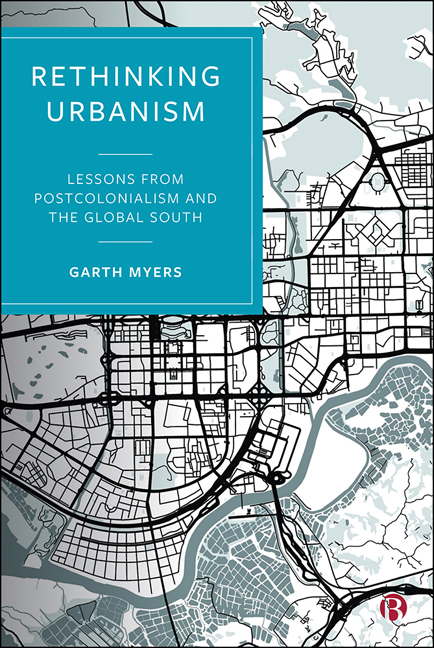Book contents
- Frontmatter
- Dedication
- Contents
- List of Figures
- List of Acronyms
- Glossary of Foreign Terms
- Acknowledgments
- Preface
- Introduction: Rethinking Urbanism from the South
- 1 Southern Processes of Planetary Urbanization in Hartford
- 2 Villages in the City: Patterns of Urbanization in the Pearl River Delta, Dakar, and Zanzibar
- 3 The Useful and Ornamental Landscapes of British (Post)colonialism
- 4 Submarine Urbanism: Cities People Make in ‘the Here and the Elsewhere’
- 5 ‘The Whole World Is Made in China’: Products and Infrastructures of Dis/connection
- 6 Urban Politics and Policy in a Southern Urban Planet
- Epilogue
- References
- Index
- Frontmatter
- Dedication
- Contents
- List of Figures
- List of Acronyms
- Glossary of Foreign Terms
- Acknowledgments
- Preface
- Introduction: Rethinking Urbanism from the South
- 1 Southern Processes of Planetary Urbanization in Hartford
- 2 Villages in the City: Patterns of Urbanization in the Pearl River Delta, Dakar, and Zanzibar
- 3 The Useful and Ornamental Landscapes of British (Post)colonialism
- 4 Submarine Urbanism: Cities People Make in ‘the Here and the Elsewhere’
- 5 ‘The Whole World Is Made in China’: Products and Infrastructures of Dis/connection
- 6 Urban Politics and Policy in a Southern Urban Planet
- Epilogue
- References
- Index
Summary
I want to begin this book with a personal explanation of what gave rise to its shape, and then a brief outline of that shape. The Martinican poet and writer Edouard Glissant, upon whom I rely at numerous moments in the text, insisted throughout his career that, in J. Michael Dash's (1995: 14) translation and rephrasing, ‘one must return to one’s place’, not in a desperate ‘longing for origins’ but in a ‘return to the point of entanglement’. In this book, I take that return to the point of entanglement seriously, on personal as well as academic-scholarly and political levels. I start from where I stand, as a professor of urban studies in Hartford, Connecticut, and I move on to some of my placeworlds, circling back frequently to Hartford and to Zanzibar, Tanzania, where I conducted my dissertation research and have returned on six subsequent research projects over the last 30 years.
When people first meet one another, one may ask, ‘where are you from?’ Like anyone, I have short answers ready for this occasion. But I am made up of entanglements. I am from the cities I have lived in; I am from other cities where I have worked, for this book and others. I am from the places where my ancestors lived. I am, like everyone, from the planet. My identity is constructed from links between urban areas whose identities are similarly intertwined, in relation. My ‘point of entanglement’ is the ever-shifting landscape of elsewheres and realms of debate in which I have lived and worked.
The urban areas on which I focus in this book are tied to one another without me, but my positionality is part of why I chose them as geographic sites for illustrating my arguments. I concentrate on these urban areas: Hartford; Zanzibar; Port of Spain, Trinidad; San Juan, Puerto Rico; Cape Coast, Ghana; Dakar, Senegal; and Shenzhen, Dongguan and Guangzhou in China's Pearl River Delta (PRD). I live and work in Hartford, where 34 percent of the population comes from Puerto Rico, with sizable Ghanaian, Trinidadian, and Chinese communities; this metropolitan area's industrialization and growth came from its ties with the US South, the West Indies, and Africa.
- Type
- Chapter
- Information
- Rethinking UrbanismLessons from Postcolonialism and the Global South, pp. xv - xxiiPublisher: Bristol University PressPrint publication year: 2020

